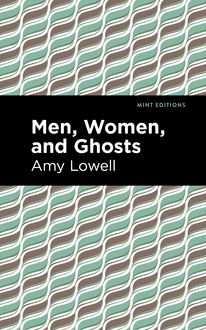-
 Univers
Univers
-
 Ebooks
Ebooks
-
 Livres audio
Livres audio
-
 Presse
Presse
-
 Podcasts
Podcasts
-
 BD
BD
-
 Documents
Documents
-
- Cours
- Révisions
- Ressources pédagogiques
- Sciences de l’éducation
- Manuels scolaires
- Langues
- Travaux de classe
- Annales de BEP
- Etudes supérieures
- Maternelle et primaire
- Fiches de lecture
- Orientation scolaire
- Méthodologie
- Corrigés de devoir
- Annales d’examens et concours
- Annales du bac
- Annales du brevet
- Rapports de stage
La lecture à portée de main
Vous pourrez modifier la taille du texte de cet ouvrage
Découvre YouScribe en t'inscrivant gratuitement
Je m'inscrisDécouvre YouScribe en t'inscrivant gratuitement
Je m'inscrisEn savoir plus
Vous pourrez modifier la taille du texte de cet ouvrage
En savoir plus

Description
The Countess of Albany (1886) is a biography by Vernon Lee. Published at the height of her career as a leading proponent of Aestheticism and scholar of the Italian Renaissance, The Countess of Albany is a biography of Princess Louise of Stolberg-Gedern, whose unhappy marriage to Charles Edward Stuart, also known as Bonnie Prince Charlie, often obscured her reputation as an independent and interesting woman in her own right. A principled feminist and committed pacifist, Lee was virtually blacklisted by critics and publishers following her opposition to the First World War. Through the efforts of dedicated scholars, however, interest in her works has increased over the past several decades, granting her the readership she deserves as a master of literary horror. “On the Wednesday after Easter the bride and bridegroom made their solemn entry into Rome; the two travelling carriages of the Prince and of the Princess were drawn by six horses; four gala coaches, carrying the attendants of Charles Edward and of his brother the Cardinal Duke of York, followed behind, and the streets were cleared by four outriders dressed in scarlet with the white Stuart cockade.” Although she is more widely known for her stories of supernatural horror, Lee was also a gifted researcher whose knowledge of Italian history and literary gift collide in The Countess of Albany. This biography is the story of Louise, a German princess who married Charles Edward Stuart, Jacobite claimant to the English throne. By the time of their acquaintance, Bonnie Prince Charlie was a man passed his prime, beaten down by years on the run after the failed uprising of 1745. Focusing on her independent spirit and relationship with Count Vittorio Alfieri of Italy, Lee provides invaluable insight on the life of a woman who forged her own path in a world dominated by men. With a beautifully designed cover and professionally typeset manuscript, this edition of Vernon Lee’s The Countess of Albany is a classic work of historical biography reimagined for modern readers.
Sujets
Informations
| Publié par | Mint Editions |
| Date de parution | 03 août 2021 |
| Nombre de lectures | 0 |
| EAN13 | 9781513297170 |
| Langue | English |
| Poids de l'ouvrage | 2 Mo |
Informations légales : prix de location à la page 0,0450€. Cette information est donnée uniquement à titre indicatif conformément à la législation en vigueur.
Extrait
The Countess of Albany
Vernon Lee
The Countess of Albany was first published in 1884.
This edition published by Mint Editions 2021.
ISBN 9781513295671 | E-ISBN 9781513297170
Published by Mint Editions®
minteditionbooks.com
Publishing Director: Jennifer Newens
Design & Production: Rachel Lopez Metzger
Project Manager: Micaela Clark
Typesetting: Westchester Publishing Services
C ONTENTS P REFACE I. T HE B RIDE II. T HE B RIDEGROOM III. R EGINA A POSTOLORUM IV. T HE H EIR V. F LORENCE VI. A LFIERI VII. T HE C AVALIERE S ERVENTE VIII. T HE E SCAPE IX. R OME X. A NTIGONE XI. S EPARATION XII. C OLMAR XIII. R UE D E B OURGOYNE XIV. B EFORE THE S TORM XV. E NGLAND XVI. T HE M ISOGALLO XVII. C ASA G IANFIGLIAZZI XVIII. F ABRE XIX. S ALON OF THE C OUNTESS XX. S ANTA C ROCE
P REFACE
In preparing this volume on the Countess of Albany (which I consider as a kind of completion of my previous studies of eighteenth-century Italy), I have availed myself largely of Baron Alfred von Reumont’s large work Die Gr ä fin von Albany (published in 1862); and of the monograph, itself partially founded on the foregoing, of M. St. Ren é Taillandier, entitled La Comtesse d’Albany , published in Paris in 1862. Baron von Reumont’s two volumes, written twenty years ago and when the generation which had come into personal contact with the Countess of Albany had not yet entirely died out; and M. St. Ren é Taillandier’s volume, which embodied the result of his researches into the archives of the Mus é e Fabre at Montpellier; might naturally be expected to have exhausted all the information obtainable about the subject of their and my studies. This has proved to be the case very much less than might have been anticipated. The publication, by Jacopo Bernardi and Carlo Milanesi, of a number of letters of Alfieri to Sienese friends, has afforded me an insight into Alfieri’s character and his relations with the Countess of Albany such as was unattainable to Baron von Reumont and to M. St. Ren é Taillandier. The examination, by myself and my friend Signor Mario Pratesi, of several hundreds of M S . letters of the Countess of Albany existing in public and private archives at Siena and at Milan, has added an important amount of what I may call psychological detail, overlooked by Baron von Reumont and unguessed by M. St. Ren é Taillandier. I have, therefore, I trust, been able to reconstruct the Countess of Albany’s spiritual likeness during the period—that of her early connection with Alfieri—which my predecessors have been satisfied to despatch in comparatively few pages, counterbalancing the thinness of this portion of their biographies by a degree of detail concerning the Countess’s latter years, and the friends with whom she then corresponded, which, however interesting, cannot be considered as vital to the real subject of their works.
Besides the volumes of Baron von Reumont and M. St. Ren é Taillandier, I have depended mainly upon Alfieri’s autobiography, edited by Professor Teza, and supplemented by Bernardi’s and Milanesi’s Lettere di Vittorio Alfieri , published by Le Monnier in 1862. Among English books that I have put under contribution, I may mention Klose’s Memoirs of Prince Charles Edward Stuart (Colburn, 1845), Ewald’s Life and Times of Prince Charles Stuart (Chapman and Hall, 1875), and Sir Horace Mann’s Letters to Walpole , edited by Dr. Doran. A review, variously attributed to Lockhart and to Dennistoun, in the Quarterly for 1847, has been all the more useful to me as I have been unable to procure, writing in Italy, the Tales of the Century , of which that paper gives a masterly account.
For various details I must refer to Charles Dutens’ M é moires d’un Voyageur qui se repose (Paris, 1806); to Silvagni’s La Corte e la Societ à Romana nel secolo XVIII ; to Foscolo’s Correspondence , Gino Capponi’s Ricordi and those of d’Azeglio; to Giordani’s works and Benass ù Montanari’s Life of Ippolito Pindemonti , besides the books quoted by Baron Reumont; and for what I may call the general pervading historical colouring (if indeed I have succeeded in giving any) of the background against which I have tried to sketch the Countess of Albany, Charles Edward and Alfieri, I can only refer generally to what is now a vague mass of detail accumulated by myself during the years of preparation for my Studies of the Eighteenth Century in Italy .
My debt to the kindness of persons who have put unpublished matter at my disposal, or helped me to collect various information, is a large one. In the first category, I wish to express my best thanks to the Director of the Public Library at Siena; to Cavaliere Guiseppe Porri, a great collector of autographs, in the same city; to the Countess Baldelli and Cavaliere Emilio Santarelli of Florence, who possess some most curious portraits and other relics of the Countess of Albany, Prince Charles Edward, and Alfieri; and also to my friend Count Pierre Boutourline, whose grandfather and great-aunt were among Madame d’Albany’s friends. Among those who have kindly given me the benefit of their advice and assistance, I must mention foremost my friend Signor Mario Pratesi, the eminent novelist; and next to him the learned Director of the State Archives of Florence, Cavaliere Gaetano Milanese, and Doctor Guido Biagi, of the Biblioteca Vittorio Emanuel of Rome, without whose kindness my work would have been quite impossible.
Florence,
March 15, 1884
I
T HE B RIDE
On the Wednesday or Thursday of Holy Week of the year 1772 the inhabitants of the squalid and dilapidated little mountain towns between Ancona and Loreto were thrown into great excitement by the passage of a travelling equipage, doubtless followed by two or three dependent chaises, of more than usual magnificence.
The people of those parts have little to do now-a-days, and must have had still less during the Pontificate of His Holiness Pope Clement XIV and we can imagine how all the windows of the unplastered houses, all the black and oozy doorways, must have been lined with heads of women and children; how the principal square of each town, where the horses were changed, must have been crowded with inquisitive townsfolk and peasants, whispering, as they hung about the carriages, that the great traveller was the young Queen of England going to meet her bridegroom; a thing to be remembered in such world-forgotten places as these, and which must have furnished the subject of conversation for months and years, till that Queen of England and her bridegroom had become part and parcel of the tales of the “Three Golden Oranges,” of the “King of Portugal’s Cowherd,” of the “Wonderful Little Blue Bird,” and such-like stories in the minds of the children of those Apennine cities. The Queen of England going to meet her bridegroom at the Holy House of Loreto. The notion, even to us, does savour strangely of the fairy tale.
What were, meanwhile, the thoughts of the beautiful little fairy princess, with laughing dark eyes and shining golden hair, and brilliant fair skin, more brilliant for the mysterious patches of rouge upon the cheeks, and vermilion upon the lips, whom the more audacious or fortunate of the townsfolk caught a glimpse of seated in her gorgeous travelling dress (for the eighteenth century was still in its stage of pre-revolutionary brocade and gold lace and powder and spangles) behind the curtains of the coach? Louise, Princess of Stolberg-Gedern, and ex-Canoness of Mons, was, if we may judge by the crayon portrait and the miniature done about that time, much more of a child than most women of nineteen. A clever and accomplished young lady, but, one would say, with, as yet, more intelligence and acquired pretty little habits and ideas than character; a childish woman of the world, a bright, light handful of thistle-bloom. And thus, besides the confusion, the unreality due to precipitation of events and change of scene, the sense that she had (how long ago—days, weeks, or years? in such a state time becomes a great muddle and mystery) been actually married by proxy, that she had come the whole way from Paris, through Venice and across the sea, besides being in this dream-like, phantasmagoric condition, which must have made all things seem light—it is probable that the young lady had scarcely sufficient consciousness of herself as a grown-up, independent, independently feeling and thinking creature, to feel or think very strongly over her situation. It was the regular thing for girls of Louise of Stolberg’s rank to be put through a certain amount of rather vague convent education, as she had been at Mons; to be put through a certain amount of balls and parties; to be put through the formality of betrothal and marriage; all this was the half-conscious dream—then would come the great waking up. And Louise of Stolberg was, most likely, in a state of feeling like that which comes to us with the earliest light through the blinds: pleasant, or unpleasant? We know not which; still drowsing, dreaming, but yet strongly conscious that in a moment we shall be awake to reality.
There was, nevertheless, in the position of this girl something which, even in these circumstances, must have compelled her to think, or, at all events, to meditate, however confusedly, upon the present and the future. If she had in her the smallest spark of imagination she must have felt, to an acute degree, the sort of continuous surprise, recurring like the tick of a clock, which haunts us sometimes with the fact that it really does just happen to be ourselves to whom some curious lot, some rare combination of the numbers in life’s lottery, has come. For the man whom she was going to marry—nay, to whom, in a sense, she was married already—the unknown whom she would see for the first time that evening, was not the mere typical bridegroom, the mere man of rank and fortune, to whom, whatever his particular individual shape and name, the daughter of a high-born
-
 Univers
Univers
-
 Ebooks
Ebooks
-
 Livres audio
Livres audio
-
 Presse
Presse
-
 Podcasts
Podcasts
-
 BD
BD
-
 Documents
Documents
-
Jeunesse
-
Littérature
-
Ressources professionnelles
-
Santé et bien-être
-
Savoirs
-
Education
-
Loisirs et hobbies
-
Art, musique et cinéma
-
Actualité et débat de société
-
Jeunesse
-
Littérature
-
Ressources professionnelles
-
Santé et bien-être
-
Savoirs
-
Education
-
Loisirs et hobbies
-
Art, musique et cinéma
-
Actualité et débat de société
-
Actualités
-
Lifestyle
-
Presse jeunesse
-
Presse professionnelle
-
Pratique
-
Presse sportive
-
Presse internationale
-
Culture & Médias
-
Action et Aventures
-
Science-fiction et Fantasy
-
Société
-
Jeunesse
-
Littérature
-
Ressources professionnelles
-
Santé et bien-être
-
Savoirs
-
Education
-
Loisirs et hobbies
-
Art, musique et cinéma
-
Actualité et débat de société
- Cours
- Révisions
- Ressources pédagogiques
- Sciences de l’éducation
- Manuels scolaires
- Langues
- Travaux de classe
- Annales de BEP
- Etudes supérieures
- Maternelle et primaire
- Fiches de lecture
- Orientation scolaire
- Méthodologie
- Corrigés de devoir
- Annales d’examens et concours
- Annales du bac
- Annales du brevet
- Rapports de stage












